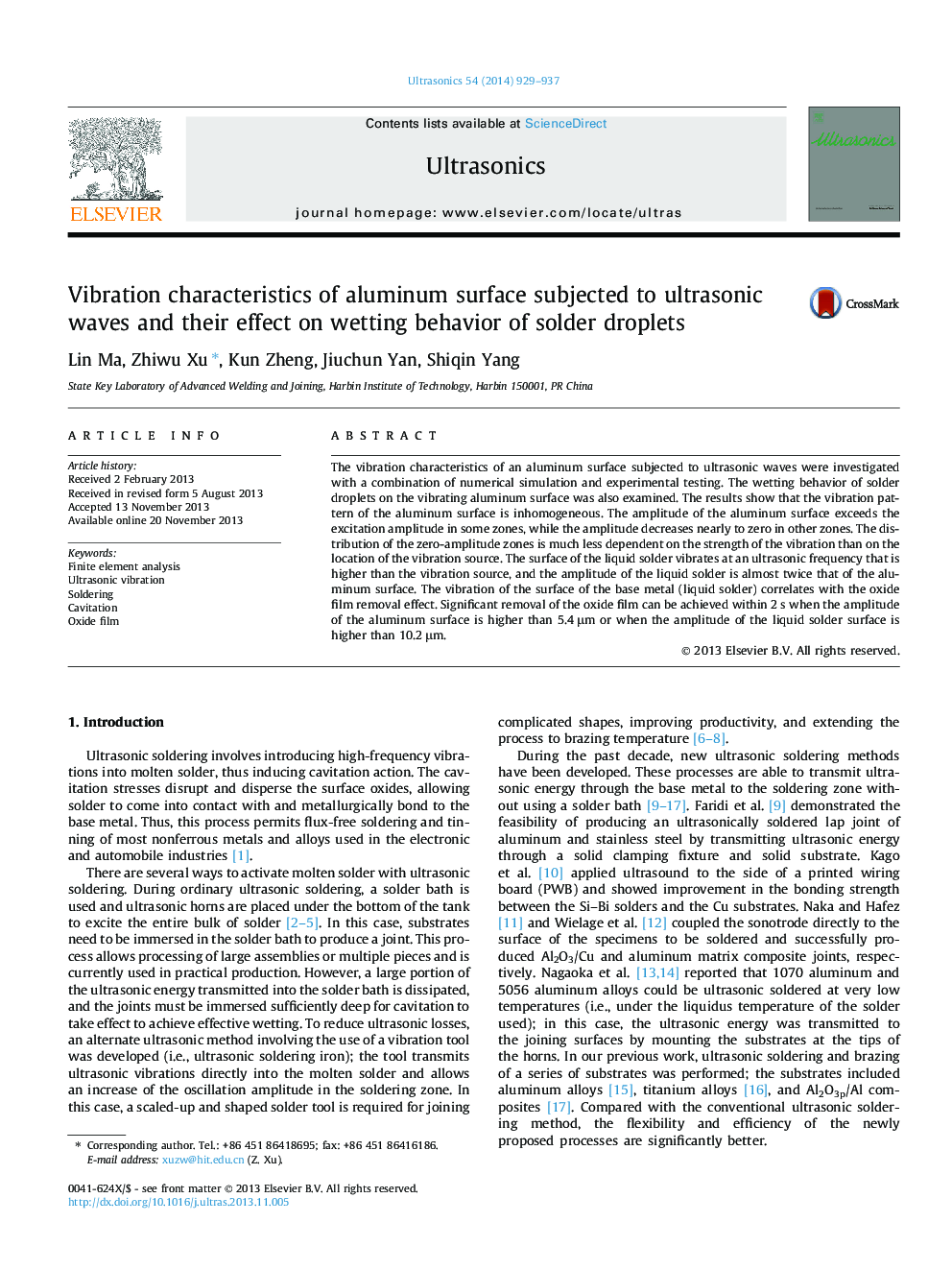| Article ID | Journal | Published Year | Pages | File Type |
|---|---|---|---|---|
| 10690446 | Ultrasonics | 2014 | 9 Pages |
Abstract
The vibration characteristics of an aluminum surface subjected to ultrasonic waves were investigated with a combination of numerical simulation and experimental testing. The wetting behavior of solder droplets on the vibrating aluminum surface was also examined. The results show that the vibration pattern of the aluminum surface is inhomogeneous. The amplitude of the aluminum surface exceeds the excitation amplitude in some zones, while the amplitude decreases nearly to zero in other zones. The distribution of the zero-amplitude zones is much less dependent on the strength of the vibration than on the location of the vibration source. The surface of the liquid solder vibrates at an ultrasonic frequency that is higher than the vibration source, and the amplitude of the liquid solder is almost twice that of the aluminum surface. The vibration of the surface of the base metal (liquid solder) correlates with the oxide film removal effect. Significant removal of the oxide film can be achieved within 2 s when the amplitude of the aluminum surface is higher than 5.4 μm or when the amplitude of the liquid solder surface is higher than 10.2 μm.
Related Topics
Physical Sciences and Engineering
Physics and Astronomy
Acoustics and Ultrasonics
Authors
Lin Ma, Zhiwu Xu, Kun Zheng, Jiuchun Yan, Shiqin Yang,
